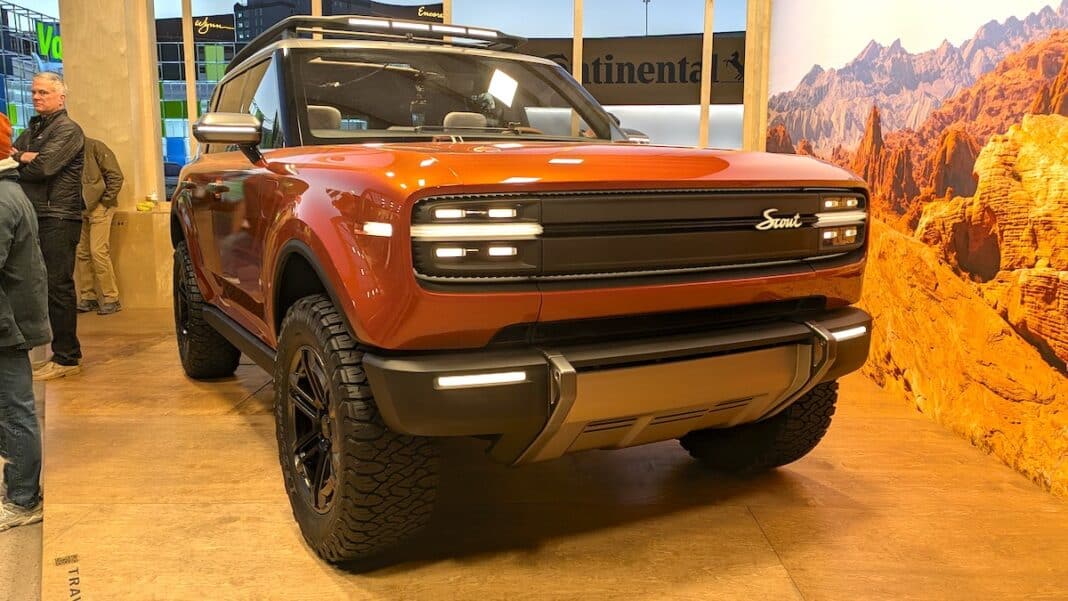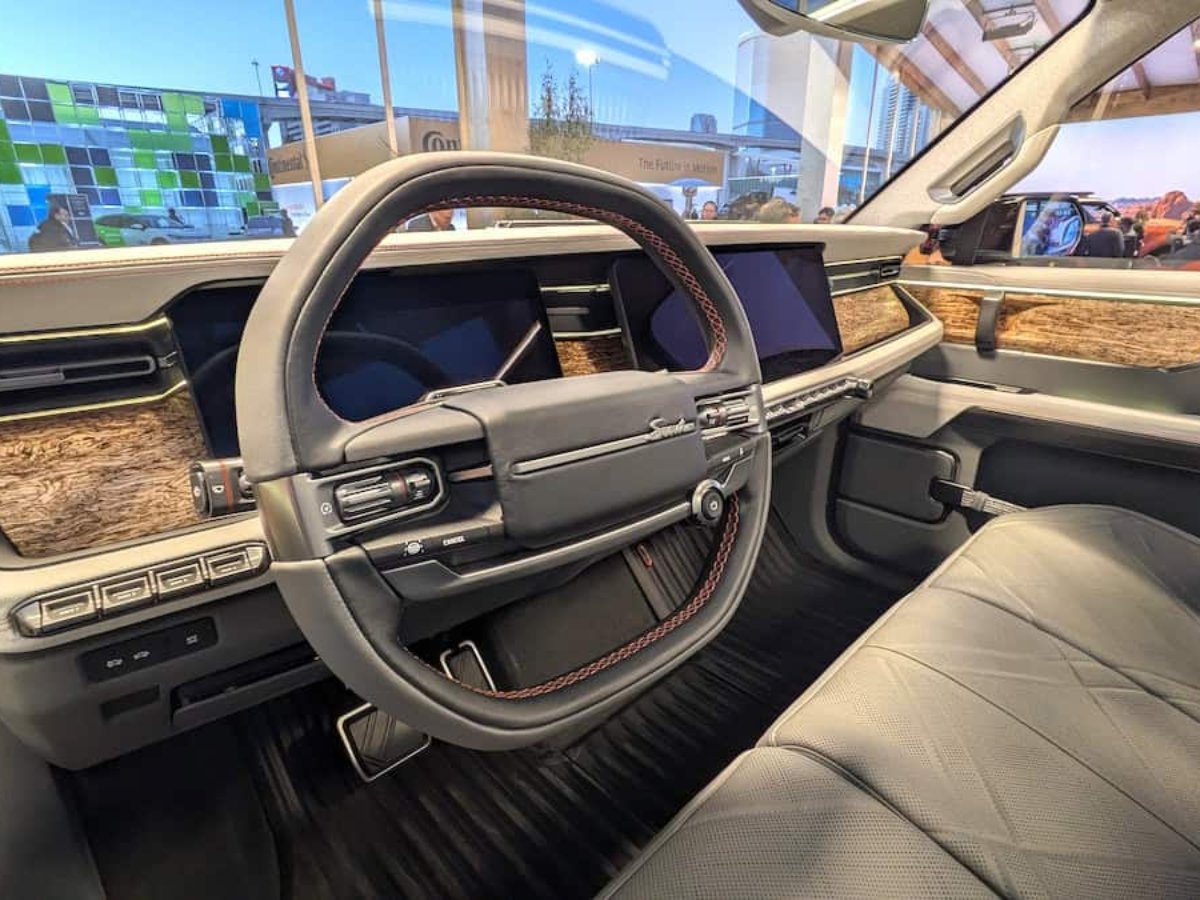I was chatting to a media colleague during CES 2025 who was adamant that the styling of the upcoming Scout Motors body-on-frame EVs – the Terra pickup and Traveler SUV – was disappointingly derivative. Then another colleague voiced his disagreement, saying how he thought the Volkswagen Group-owned startup, which is designing, engineering and (from 2027) building and selling its vehicles in the USA, had got the designs spot-on. You can’t please everyone.
Scout’s Tightrope Walk into the Future
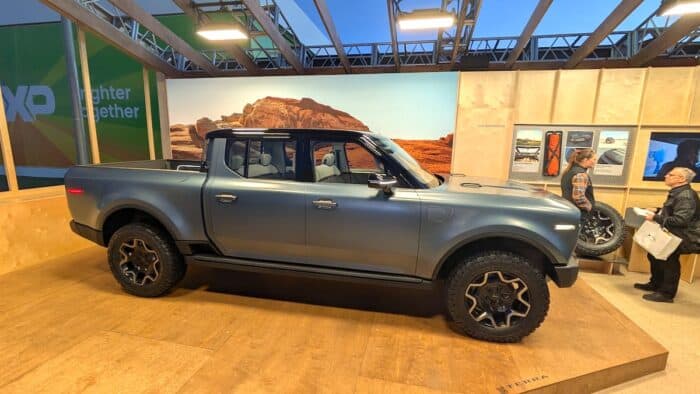
Such is the challenge of creating a car company from scratch, even one building on a legacy like Scout’s. That brand history can also be a burden: do you go too retro and exclude buyers who want their 21st-Century, electrified truck to look like what it is, or opt for a modern design and risk alienating those who remember what Scouts used to look like, or indeed the loyal enthusiast owners who’ve kept the flame burning since production of the International Harvester-made original ended in 1980? For another opinion on how hard it is to walk this tightrope, just ask Jaguar.
Related – Bollinger B1 Combines Classic Style with All-Electric Performance
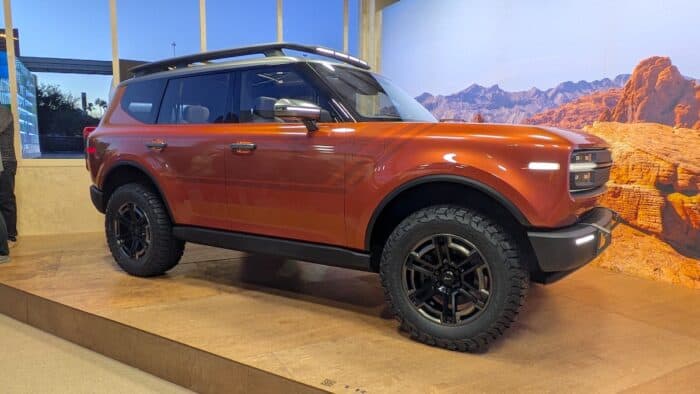
The new Scouts are being developed in Novi, Michigan, by an engineering team whose background is variously Detroit Three, Rivian, Silicon Valley and elsewhere.
In an outdoor pavilion at CES, Scout showed off handmade prototypes of its upcoming vehicles and announced the satellite wifi connectivity and Scout Community UX interface that’ll feature in every cabin. The former will be popular with buyers who want to take their Scout overlanding, while the latter – the result of extensive customer research – is designed to blend old-school tactile controls with modern, swipeable, smartphone-like screen operations. Another line deftly being walked between the old and the new.
Inside the Terra Prototype Blends Heritage, Sustainability and Functionality
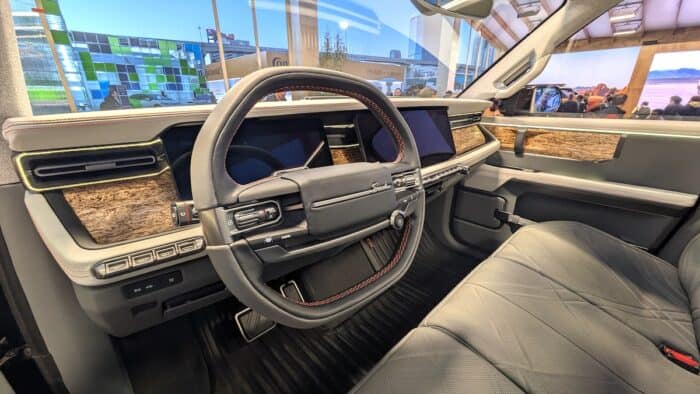
Sitting inside a Terra prototype whose cabin is about 85% production-accurate, I was struck by the number of physical buttons on the dashboard, rare as they are nowadays. I also liked how the 16.2in touchscreen was integrated into the overall design. More than anything, though, the choice of trim materials – in this prototype at least – felt distinctive and appropriate to the vehicle’s purpose. The hemp wood looks fantastic and the leather on the front bench seat – a throwback that can be swapped for two conventional chairs if you wish – will contain natural imperfections. It’s a move that appears to neatly marry sustainability, no-cost personalization and the brand’s no-frills, work-truck heritage, in one stroke.

A brand spokesperson told me that there’s no intention, nor need, to overcomplicate when it comes to the basic controls, or reinvent what’s proven in an off-road environment, such as mechanical lockers. Good. Even within the Volkswagen Group, there’s recent experience of the bad things that happen when you go too far down the touchscreen route.
Takeaway
Incidentally, these are not Volkswagens by another name, even if it will make sense to use some of the Group’s test facilities and donor bodies for early mule vehicles, as well as its purchasing power. The new Scouts are being developed in Novi, Michigan, by an engineering team whose background is variously Detroit Three, Rivian, Silicon Valley and elsewhere. The mentality, we’re told, is very much nimble startup rather than process-heavy corporate undertaking, with a “hard wall” between Scout Motors and Volkswagen of America. To be fair, the VW Group has a history of letting brands like Lamborghini or Ducati get on with doing it their way. Even the sales model is different – direct to consumer, rather than tapping into VW’s legacy network.
My own view is that it’s an interesting project with lots of potential. I like the idea of reviving an historic brand and it feels like the modern Scout Motors is trying to go about things the right way. As for that argument about the styling, I came down on the side of my colleague who felt that chief design officer, Chris Benjamin and his team have judged it about right: one foot in the past, without getting stuck in some 50-year-old mud.

